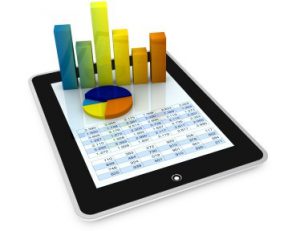Sales performance management is the art of combining performance data with improvement processes of the businesses with the aim of driving sales effectively. At its central point is the incentive compensation management practice and the impact of the business grows with addition of other critical processes for instance analytics and dashboarding, territory and quota management and coaching. Sales performance management in small businesses may be carried out by analysts and good managers. In large organizations with more than one sales channel, there may be important data as well as organizational barriers to guaranteeing efficient sales performance management implementation and overall alignment. The use of sales performance management solutions offers a good way of dealing with such challenges by making it possible for the sales functions to automate the leverage metrics, commissioning process, reports, plan territories and shares, analytics and dashboards, and utilize features of workflow to clarify goals, straighten the organization, disclose opportunities and improve the results of the business.
Sales performance management improves sales organization in various ways as numerous businesses are unable to execute effectively and efficiently improvement initiatives like cost reduction and sales transformation since success needs coordinated calculations, change of behavior and also alignment across all functions of sales. Some of the reasons why sales organizations struggle to execute improvement campaigns and adapt to varying business needs include absence of forefront visibility into performance, misaligned incentives and being unable to place individual sales rep incentives and goals in context with the objectives of the organization. Sales performance management assists an organization in uncovering and fixing performance shortcomings and its initiatives deliver high returns on investments for sales operations. It also provides an organization with a framework to be able to plan and also model sales strategies as well as ensure timely implementation of all sales initiatives while giving decision makers and forefront sales people visibility into performance.
Some of the results an organizations can achieve through sales performance management include compelling plus measurable sales incentive schemes that influence sales behavior positively, better sales targeting via an understanding of the trends of the markets and targeting of sales in a better way across territories.
Other results include:
Increased revenue generation and productivity of the sales person and this is driven by incentive programs and more effective pay, staff retention because of transparent objectives and enhanced supervisory management, increase in sharing of best work practices from top employees up to developing teammates.
Improved analyst performance is achieved and this is driven by substantial time savings as a result of automated data integration as well as cleansing, business-driving insight arising from concentration on analytic works verses repetitive report production tasks and improved process of strategic decision making.
Greater executive impact that is driven by the ability to accomplish compensation plan changes as per the business speed, more fact-based and data-driven decisions arising from sales analytics and transparency into business performance across all departments and roles. Increased effectiveness and efficiency of the supervisor and this is driven by superior impact management of channels, teams and regions, decreased administration activities like gathering of data for coaching, director and manager transparency into supervisor effectiveness and performance.


























































